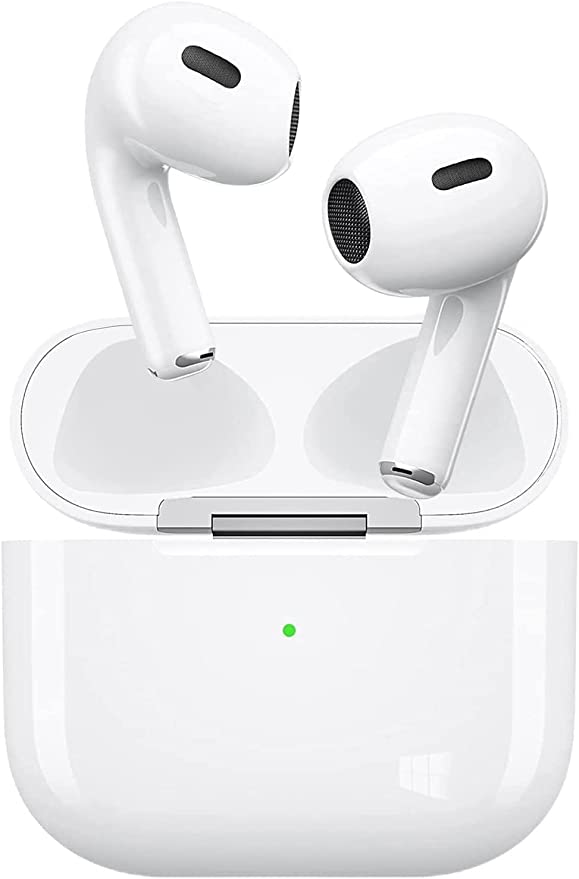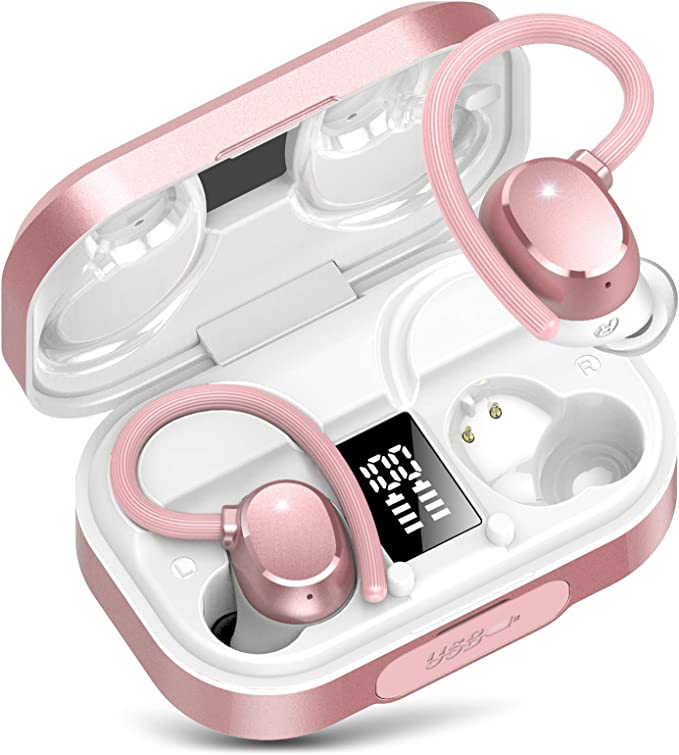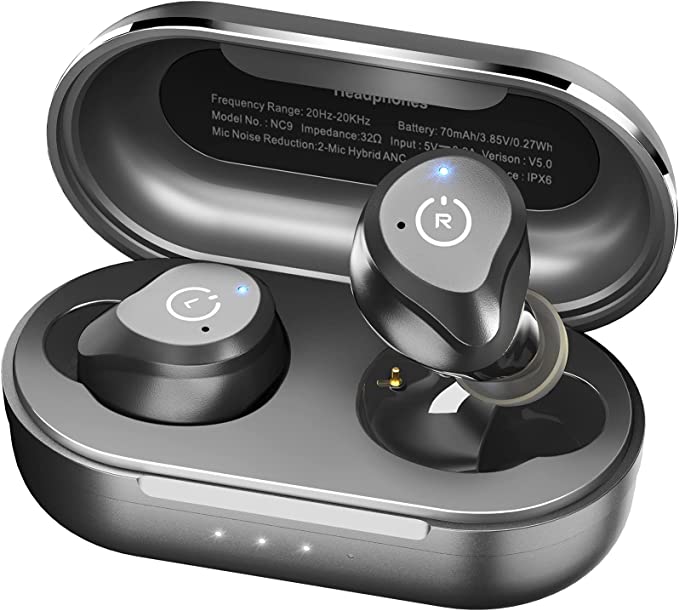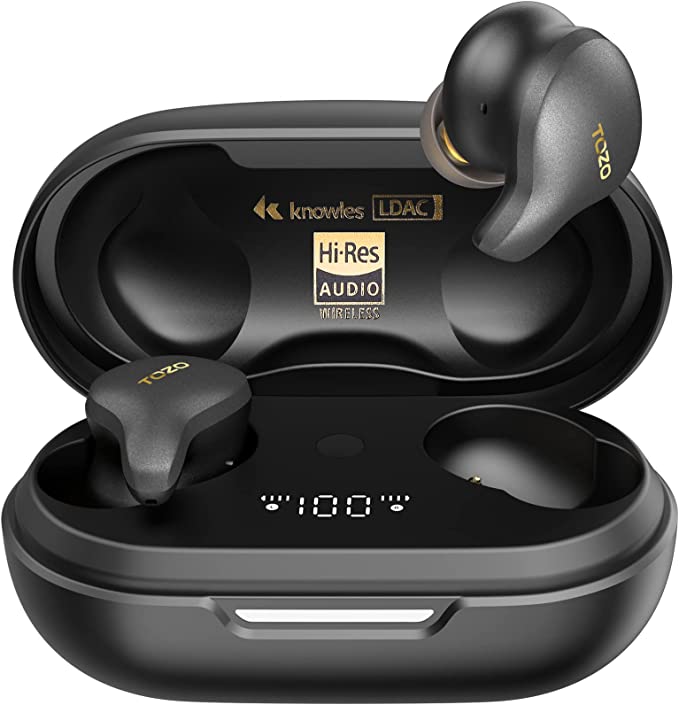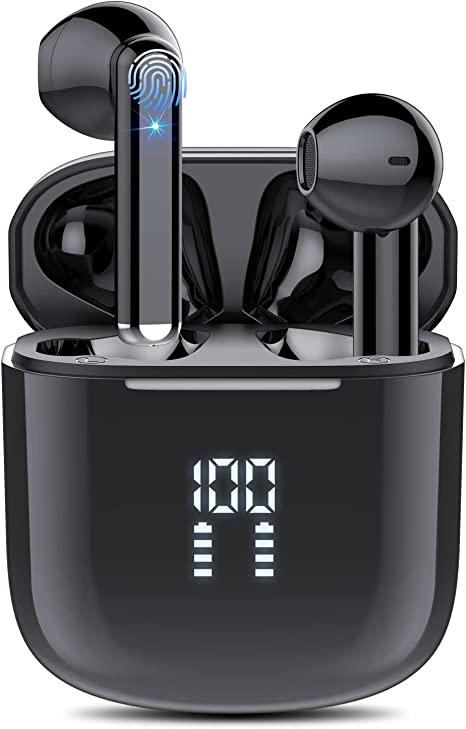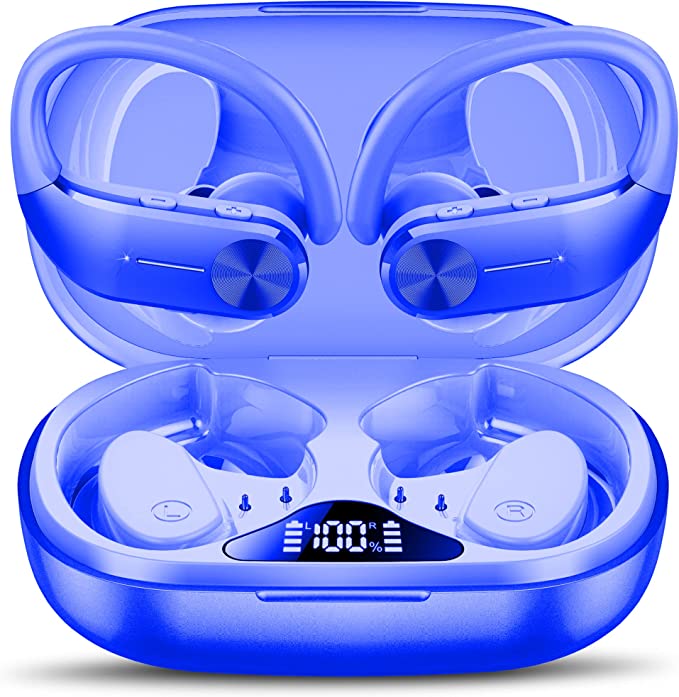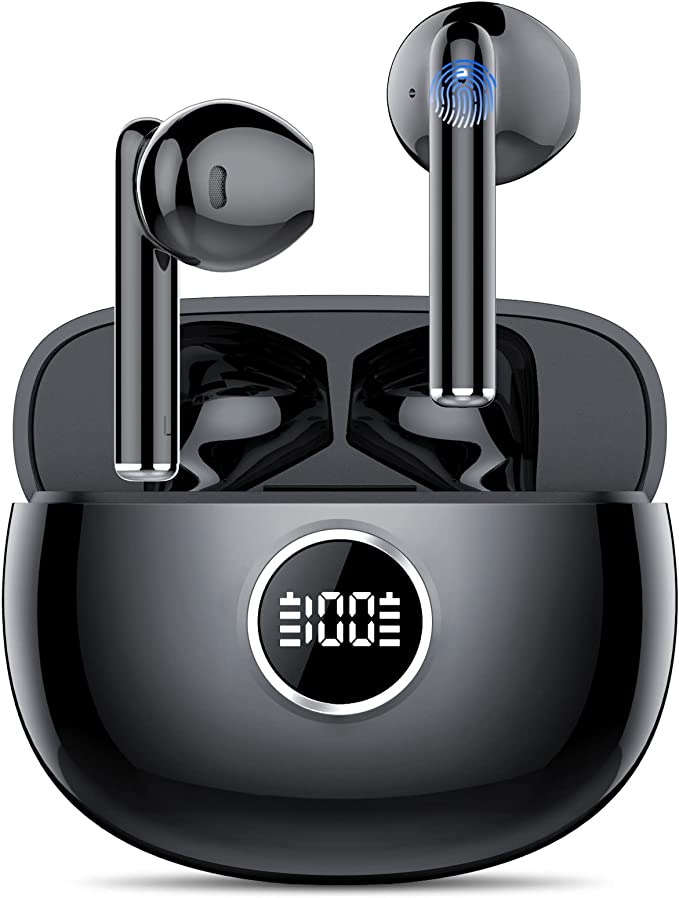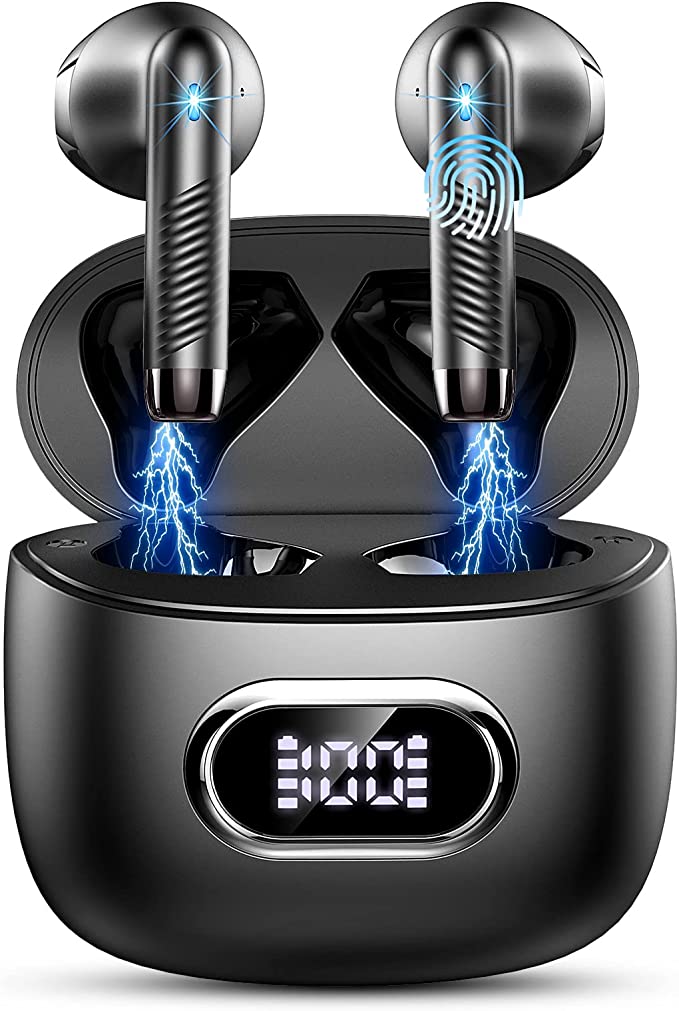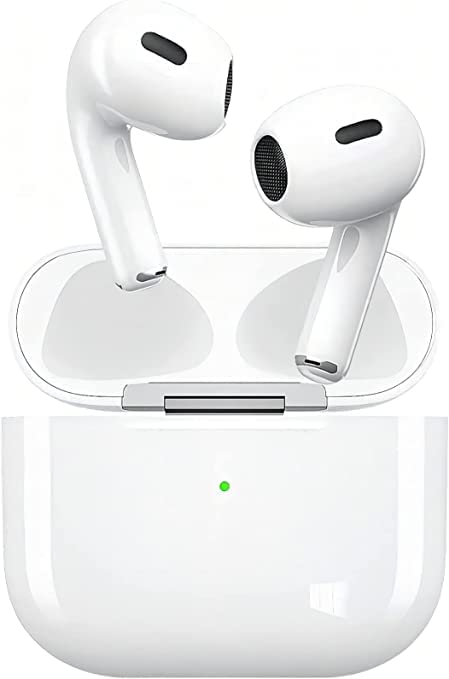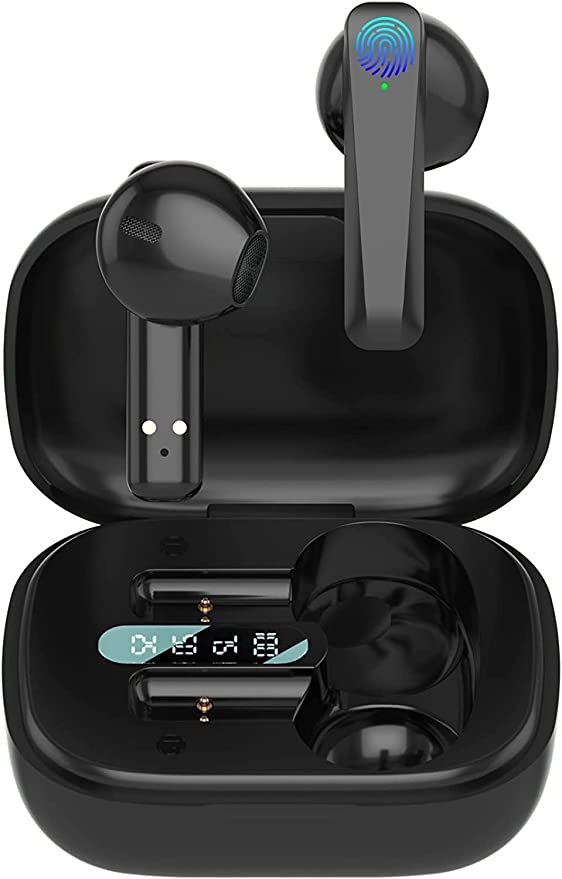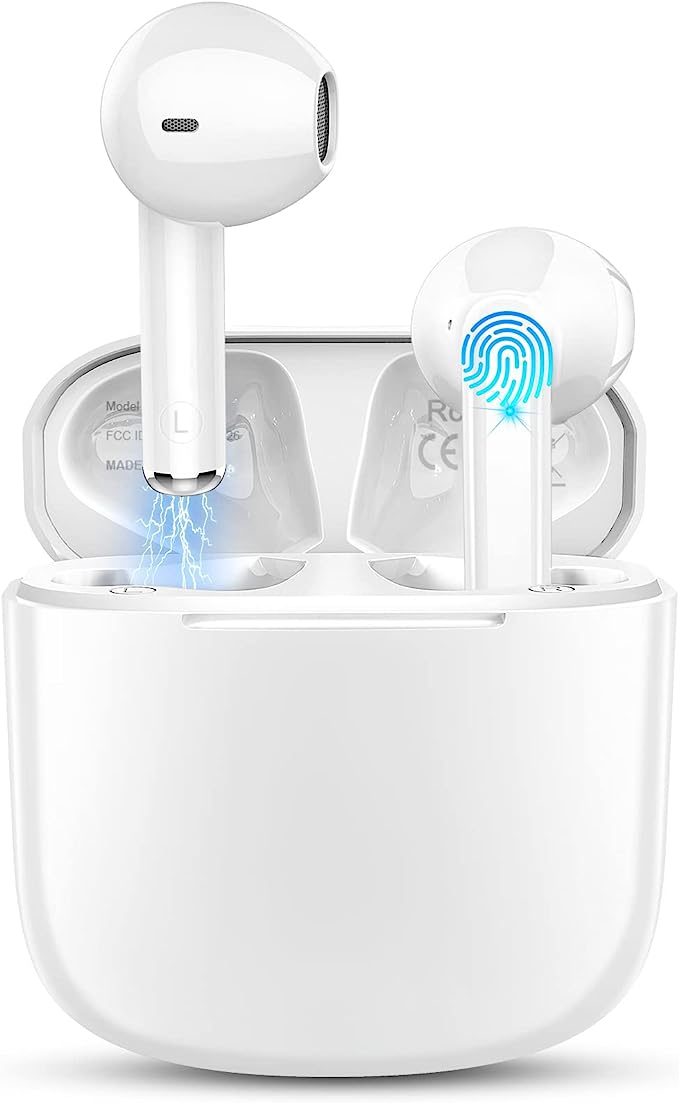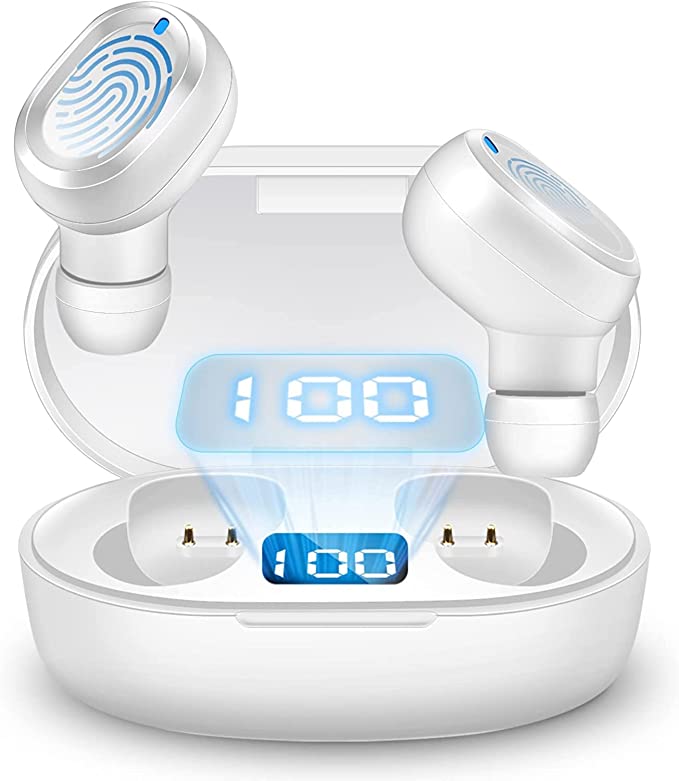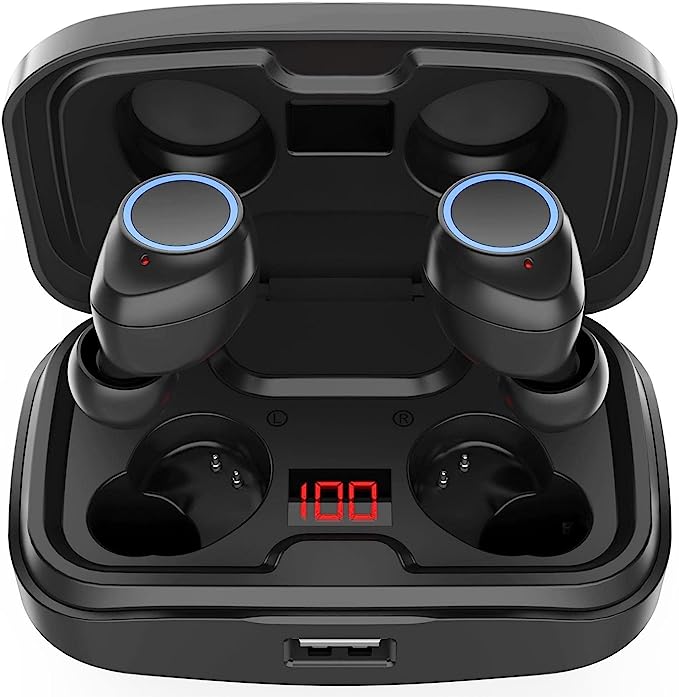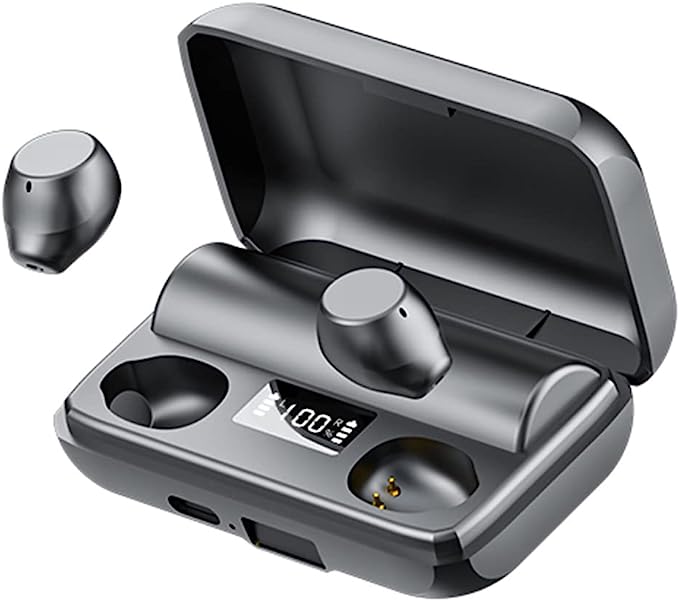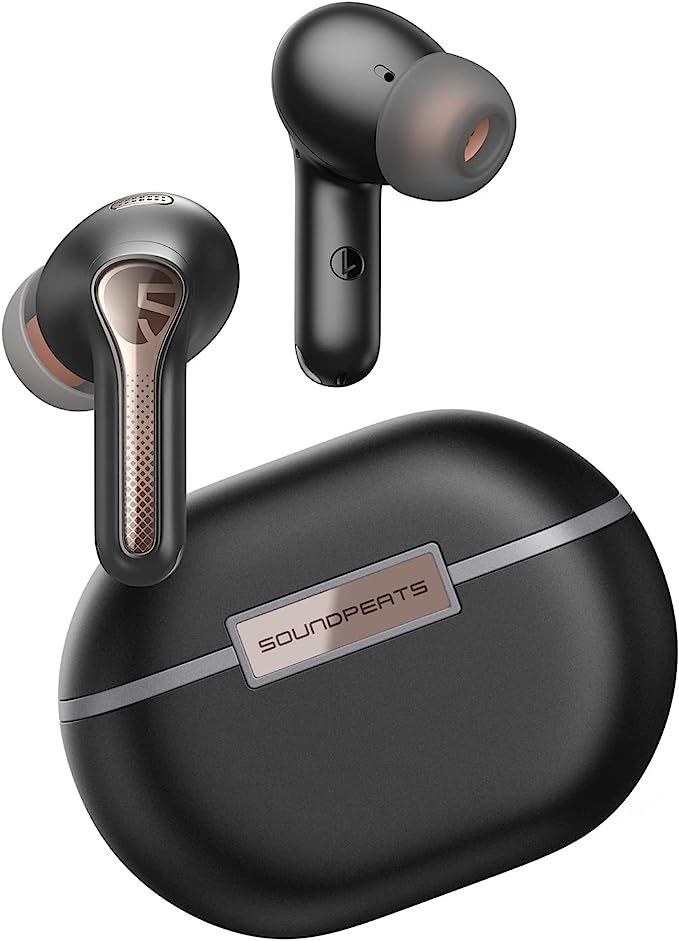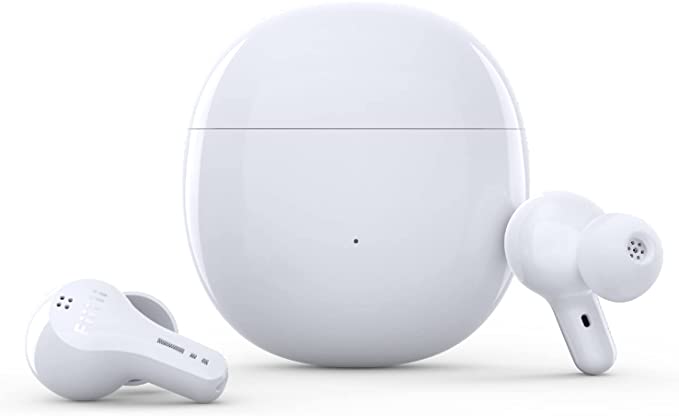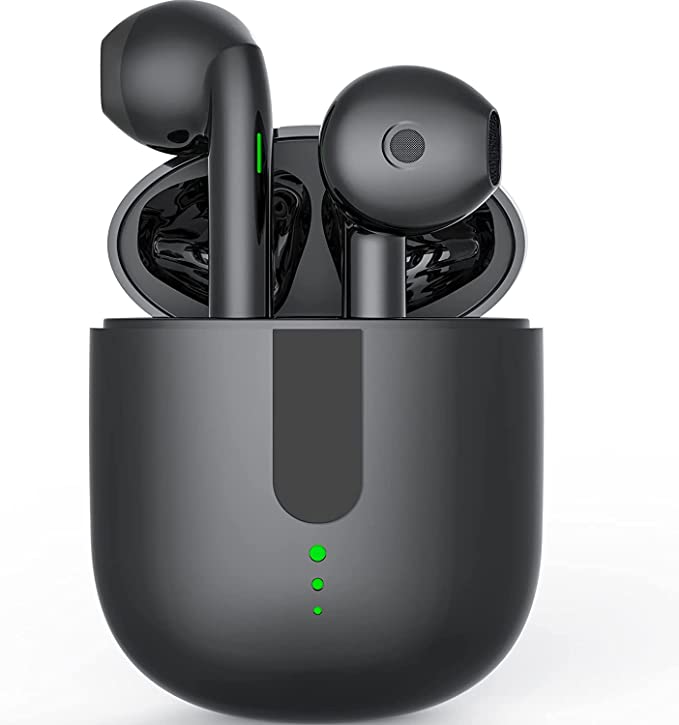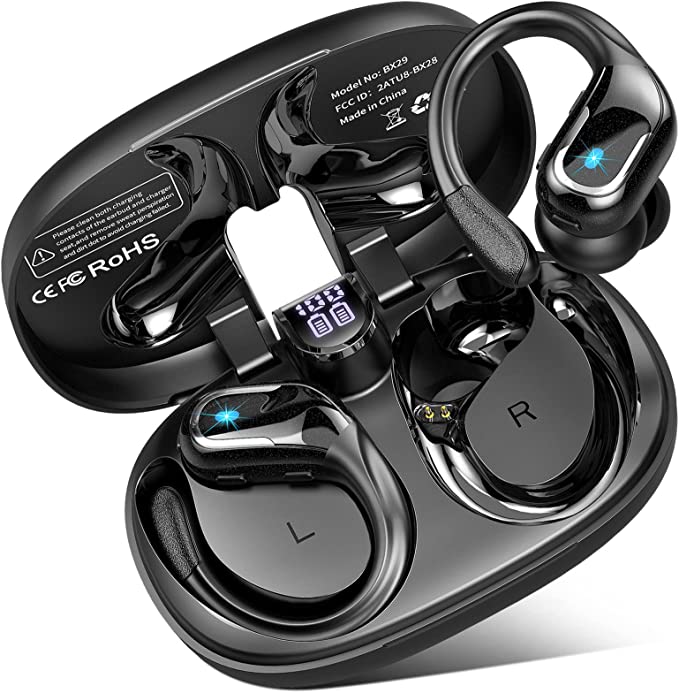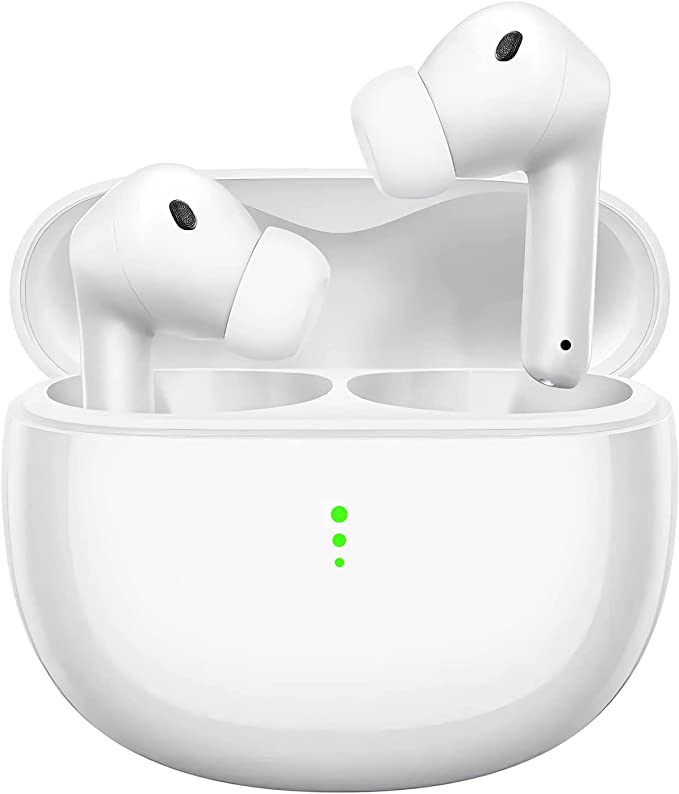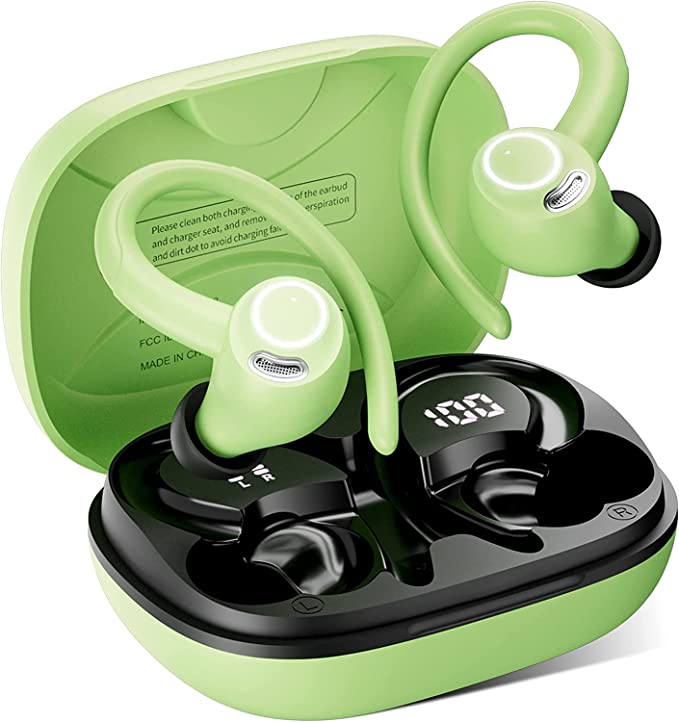AMAHLE Wireless Bluetooth 5.3 Earbuds: Superior Sound & Stability for Sports and Work
Update on March 21, 2025, 9:33 a.m.
The world of personal audio has undergone a remarkable transformation. What began with bulky headphones tethered by wires has evolved into a universe of sleek, wireless earbuds that deliver sound directly to our ears, seemingly by magic. But this “magic” is, of course, the result of decades of scientific innovation. The AMAHLE A4 wireless earbuds, while currently unavailable, offer a perfect opportunity to delve into the technologies that power this modern marvel, particularly the advancements of Bluetooth 5.3.
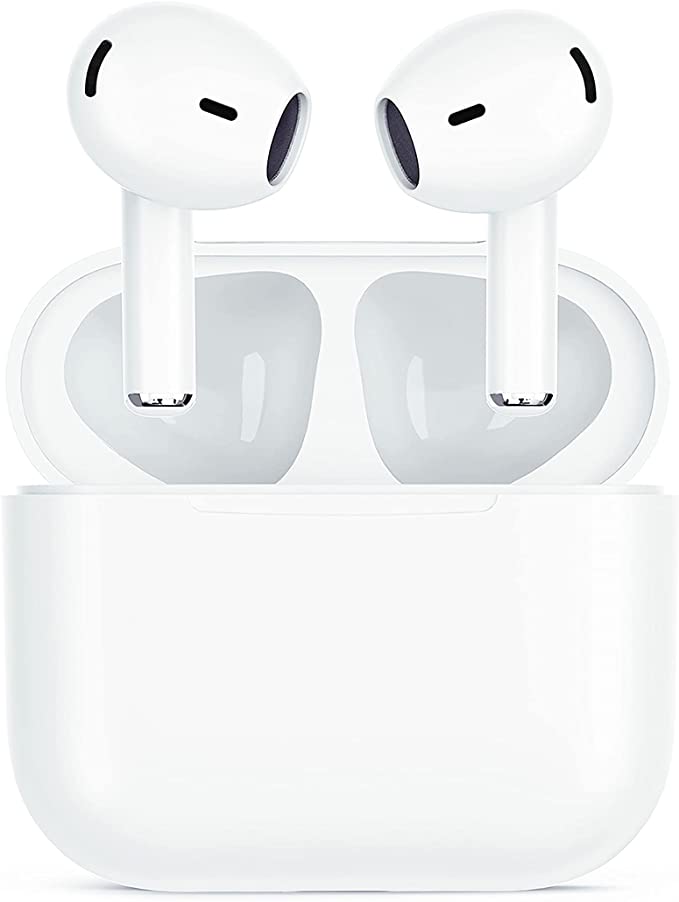
The Wireless Revolution: A Quiet History
Long before the advent of Bluetooth, radio waves were used to transmit audio signals. Early wireless headphones, often used in aviation and military applications, were large and cumbersome. The invention of the transistor in the mid-20th century paved the way for smaller, more portable devices. However, it wasn’t until the late 1990s that Bluetooth technology, spearheaded by Ericsson, emerged as a viable solution for short-range wireless communication, initially intended to replace RS-232 data cables. The first Bluetooth headset appeared in 2000, a bulky device far removed from today’s tiny earbuds. The evolution continued, with each new Bluetooth version bringing improvements in power consumption, data transfer rates, and connection stability. True Wireless Stereo (TWS) technology, which eliminated the wire connecting the two earbuds, marked another major milestone.
Decoding Bluetooth 5.3: More Than Just a Number
Bluetooth 5.3 isn’t just an incremental update; it represents a significant leap forward in wireless audio technology. To understand its benefits, let’s break down some key features:
-
Connection Subrating: Imagine a busy highway with multiple lanes. Earlier Bluetooth versions were like cars randomly switching lanes, causing congestion and slowdowns. Connection Subrating in Bluetooth 5.3 is like assigning dedicated lanes to specific devices, reducing interference and improving connection stability. This is particularly noticeable in environments with many wireless devices operating simultaneously, like a crowded gym or a busy office.
-
Periodic Advertising Interval Filtering: Bluetooth devices constantly send out “advertisement” signals to discover and connect to other devices. Think of it like a lighthouse sending out flashes of light. Bluetooth 5.3 allows devices to filter out unnecessary advertisement signals more efficiently, reducing power consumption and improving connection speed. It’s like the lighthouse having a smarter system to recognize which ships need its signal and ignoring the rest.
-
Enhanced Connection Control: Bluetooth 5.3 gives devices greater control over the connection process, allowing for faster and more reliable pairing. It’s like having a more efficient air traffic control system, ensuring smooth takeoffs and landings for all connected devices.
-
Low Energy (LE) improvements: Many of the improvements are within Bluetooth Low Energy, reducing overall power for longer battery.
These enhancements translate to tangible benefits for the user: fewer dropped connections, longer battery life, and reduced audio latency (the delay between when a sound is sent and when you hear it). This low latency is particularly crucial for gaming and watching videos, where even a slight delay can be disruptive.
LE Audio: The Next Generation of Wireless Sound
While the provided product information doesn’t explicitly mention LE Audio, it’s worth discussing as it is closely tied to Bluetooth 5.2 and 5.3. LE Audio is a new standard that promises to revolutionize wireless audio. It introduces a new codec called LC3 (Low Complexity Communication Codec), which offers superior audio quality at lower bitrates compared to the traditional SBC codec. This means better sound with less power consumption. LE Audio also supports multi-stream audio, allowing you to connect multiple audio devices to a single source, and Auracast™ broadcast audio, enabling public venues to broadcast audio to multiple listeners simultaneously. It is not confirmed if the AMAHLE A4 supports LE Audio, but given its use of Bluetooth 5.3, it’s a possibility.
The Quest for Silence: Understanding Noise Cancellation
The AMAHLE A4 earbuds are described as having “noise cancellation.” This is a crucial feature for many users, especially in noisy environments. But how does it work? There are two main approaches:
-
Passive Noise Cancellation: This relies on the physical design of the earbuds to block out external noise. The in-ear design of the AMAHLE A4, coupled with the ear cushions, creates a seal that physically obstructs sound waves from entering your ear canal. It’s like putting your fingers in your ears – a simple but effective way to reduce noise.
-
Active Noise Cancellation (ANC): This is a more sophisticated technology that uses microphones and electronics to actively counteract incoming noise. Here’s how it works:
- Microphones “listen” to the ambient noise: Tiny microphones on the outside of the earbuds capture the sounds around you.
- Noise analysis: An internal processor analyzes the incoming noise and generates an “anti-noise” signal. This anti-noise signal is a sound wave that is exactly opposite in phase to the incoming noise.
- Anti-noise playback: The earbuds play the anti-noise signal through their speakers.
- Cancellation: When the original noise wave and the anti-noise wave meet, they effectively cancel each other out, resulting in a significant reduction in perceived noise. This is based on the principle of destructive interference.
There are different types of ANC, including feedforward (where the microphone is placed on the outside of the earbud), feedback (where the microphone is placed inside the earbud), and hybrid (which combines both). While the product description doesn’t specify the type of ANC used, it’s likely that the AMAHLE A4 employs some form of ANC, given the prevalence of this technology in modern noise-canceling earbuds.
Built to Last: IPX7 Waterproofing Explained
The IPX7 rating signifies a high level of protection against water. “IP” stands for “Ingress Protection,” a standard developed by the International Electrotechnical Commission (IEC). The “X” in IPX7 indicates that the device has not been formally tested for protection against dust. The “7” indicates the level of protection against water. Specifically, IPX7 means the earbuds can withstand immersion in up to 1 meter (3.3 feet) of water for 30 minutes without damage.
This doesn’t mean you should go swimming with your earbuds, but it does provide peace of mind knowing that they can handle sweat, rain, and even accidental submersion. The protection is achieved through a combination of tight seals, waterproof membranes, and hydrophobic coatings that prevent water from entering the internal components.
The Science of Sound: How Earbuds Create Audio
Earbuds, like all speakers, are transducers. They convert electrical energy into sound energy. Most earbuds use a type of transducer called a dynamic driver. A dynamic driver consists of three main parts:
- Diaphragm: A thin, flexible membrane that vibrates to produce sound waves.
- Voice coil: A coil of wire attached to the diaphragm.
- Magnet: A permanent magnet that creates a magnetic field.
When an electrical audio signal passes through the voice coil, it creates a varying magnetic field. This field interacts with the permanent magnet’s field, causing the voice coil (and the attached diaphragm) to vibrate. These vibrations create pressure waves in the air, which we perceive as sound. The frequency of the vibrations determines the pitch of the sound, and the amplitude of the vibrations determines the loudness.
The Human Factor: How Our Ears Perceive Sound
Our ears are incredibly complex organs. Sound waves, funneled by the outer ear (the pinna) into the ear canal, cause the eardrum (tympanic membrane) to vibrate. These vibrations are then amplified by three tiny bones in the middle ear – the malleus, incus, and stapes (also known as the hammer, anvil, and stirrup). These bones act as a lever system, transferring the vibrations to the inner ear.
The inner ear contains the cochlea, a fluid-filled, snail-shaped structure lined with thousands of tiny hair cells. These hair cells are not actual hairs, but specialized sensory cells with hair-like stereocilia. The vibrations transmitted from the middle ear cause the fluid in the cochlea to move, which in turn deflects the stereocilia. This deflection triggers an electrical signal that travels along the auditory nerve to the brain, where it is interpreted as sound. Different frequencies of sound cause vibrations at different locations along the cochlea, allowing us to distinguish between high-pitched and low-pitched sounds. This is, in a very simplified sense, how we convert mechanical vibrations into the rich tapestry of sounds we experience. This field of study, called psychoacoustics, explores the relationship between the physical properties of sound and our subjective perception of it.
Beyond the Specs: Considerations for Choosing Wireless Earbuds
While the AMAHLE A4’s specifications highlight several key technologies, it’s important to remember that choosing the right wireless earbuds is a personal decision. Here are some general factors to consider, beyond just the technical specifications:
- Comfort and Fit: Earbuds that don’t fit well can be uncomfortable and may not provide optimal sound isolation or noise cancellation. Look for earbuds that come with different sizes of ear tips to ensure a snug fit.
- Use Case: Consider how you’ll primarily use the earbuds. Are they for workouts, commuting, work calls, or critical listening? Different features will be more or less important depending on the intended use.
- Sound Quality Preferences: Some people prefer a bass-heavy sound, while others prefer a more balanced or neutral sound signature. While objective measurements like frequency response can provide some insight, personal preference plays a significant role.
- Battery Life: Consider how long you typically need to use your earbuds without recharging. Also, factor in the charging time and whether the charging case provides additional battery life.
- Controls: How do you control playback, volume, and calls? Are the controls intuitive and easy to use? Touch controls, physical buttons, and voice assistants all offer different user experiences.
- Codec Support: If you are an audiophile, consider higher quality codecs.
A Look to The Future: what next?
The evolution of wireless earbuds is far from over. We can anticipate even smaller, more comfortable designs, driven by advancements in microelectronics and materials science. Further improvements in Bluetooth technology will likely lead to even lower power consumption, higher bandwidth (enabling true lossless audio), and more sophisticated features. Artificial intelligence (AI) will play an increasingly important role, with features like personalized sound profiles, adaptive noise cancellation that adjusts to your environment in real-time, and even real-time language translation.
The integration of biosensors into earbuds is another exciting possibility. Imagine earbuds that can monitor your heart rate, body temperature, and even brain activity, providing valuable health and fitness data. The convergence of audio technology, wearable technology, and AI promises a future where our earbuds are not just for listening, but also for enhancing our health, productivity, and overall well-being. The journey from bulky wireless headsets to the sophisticated, miniature devices we have today has been remarkable, and the future of personal audio is undoubtedly filled with even more exciting innovations.
